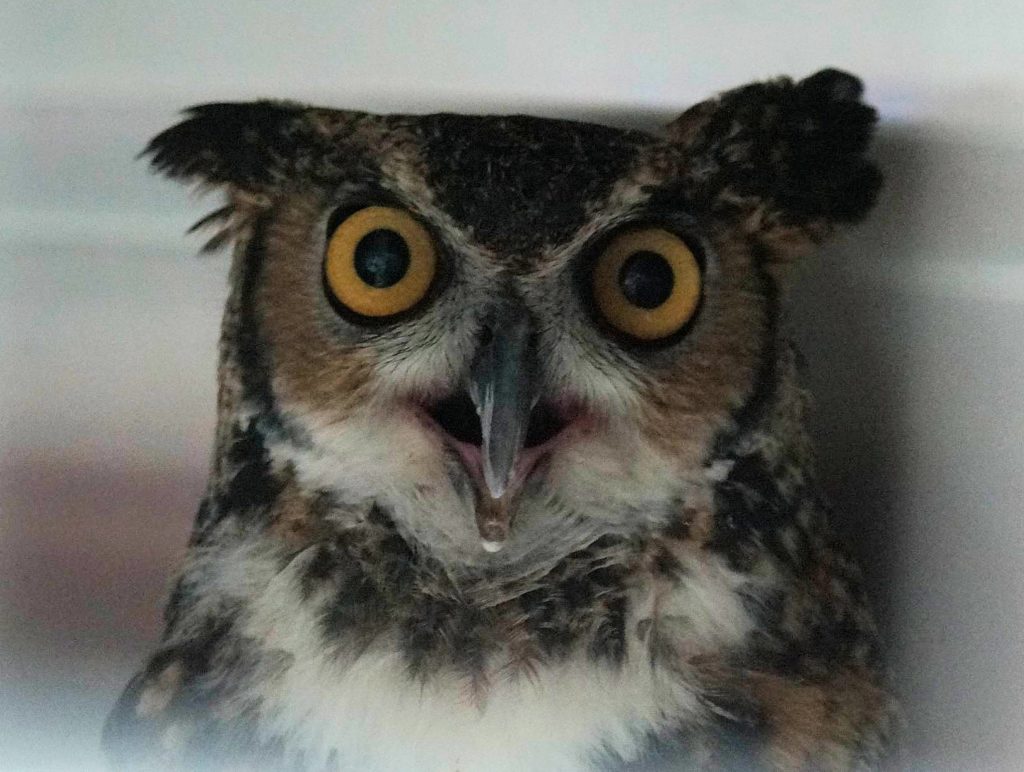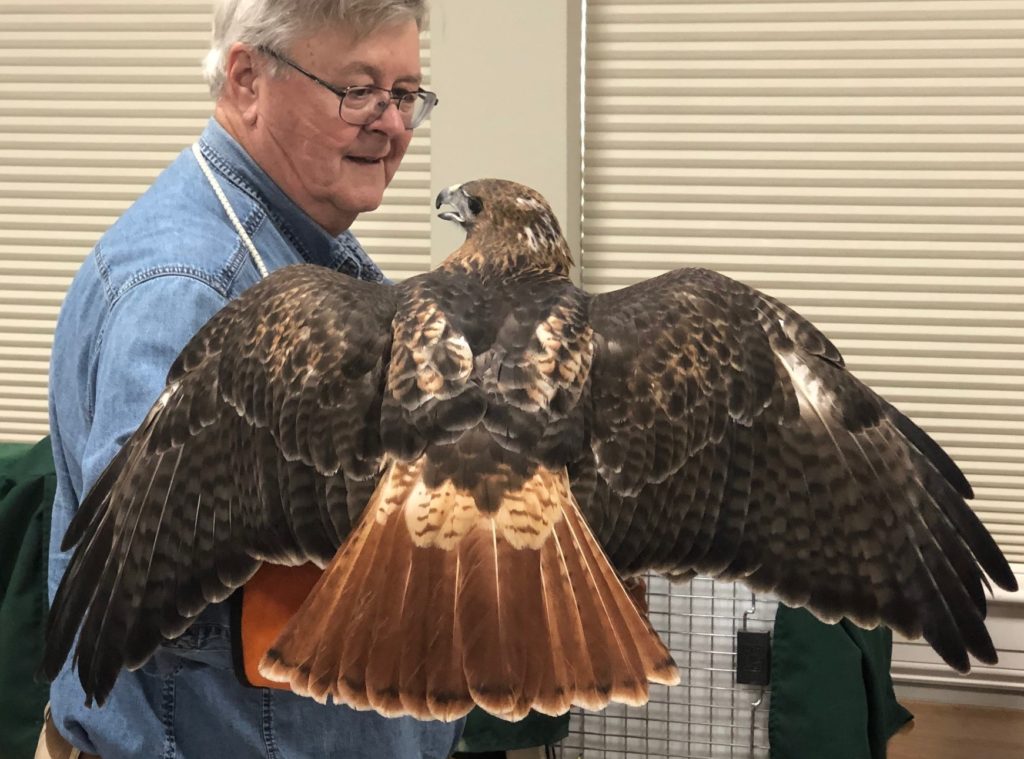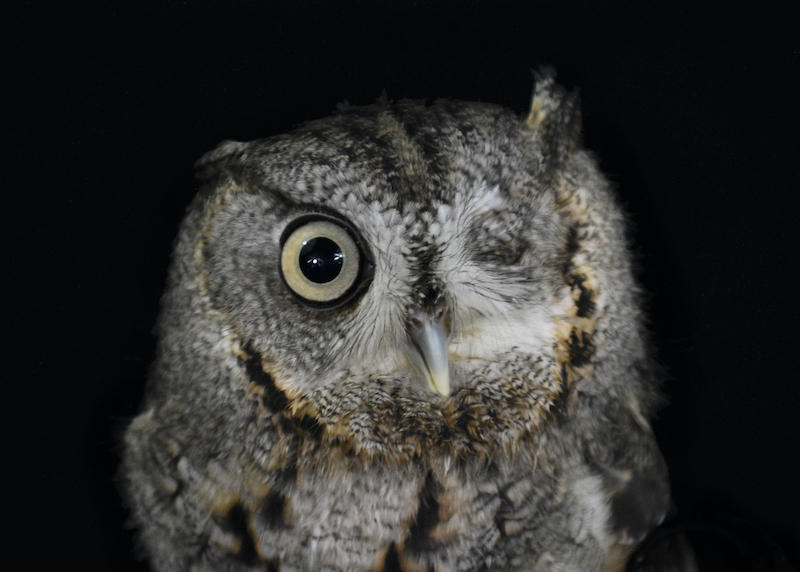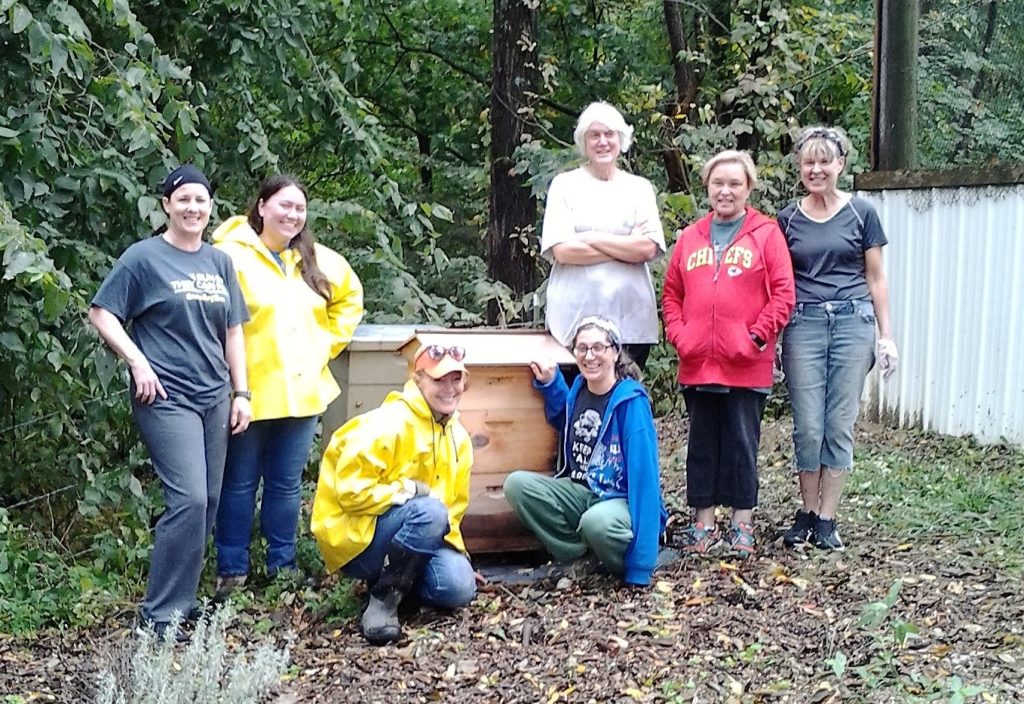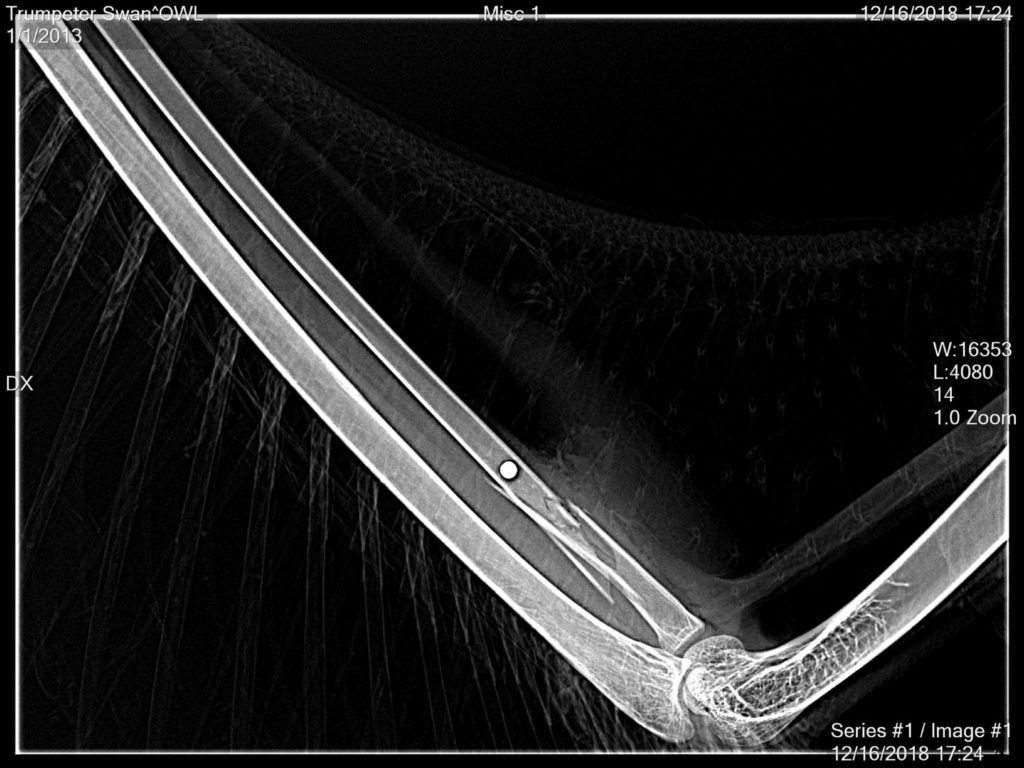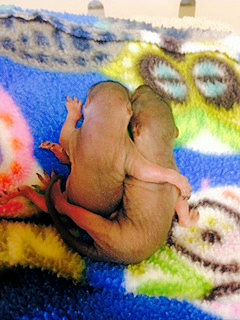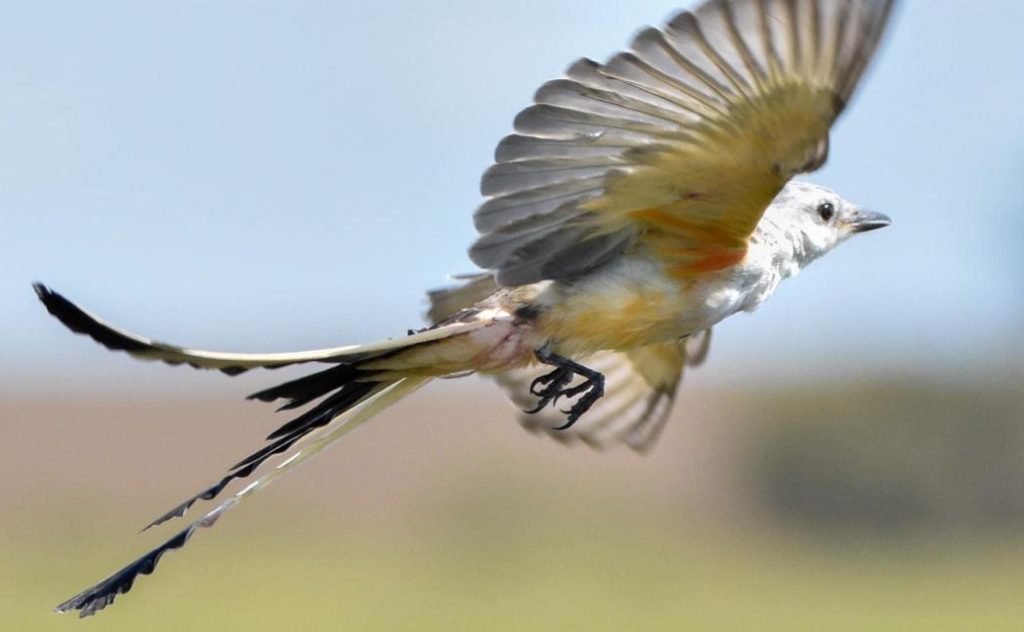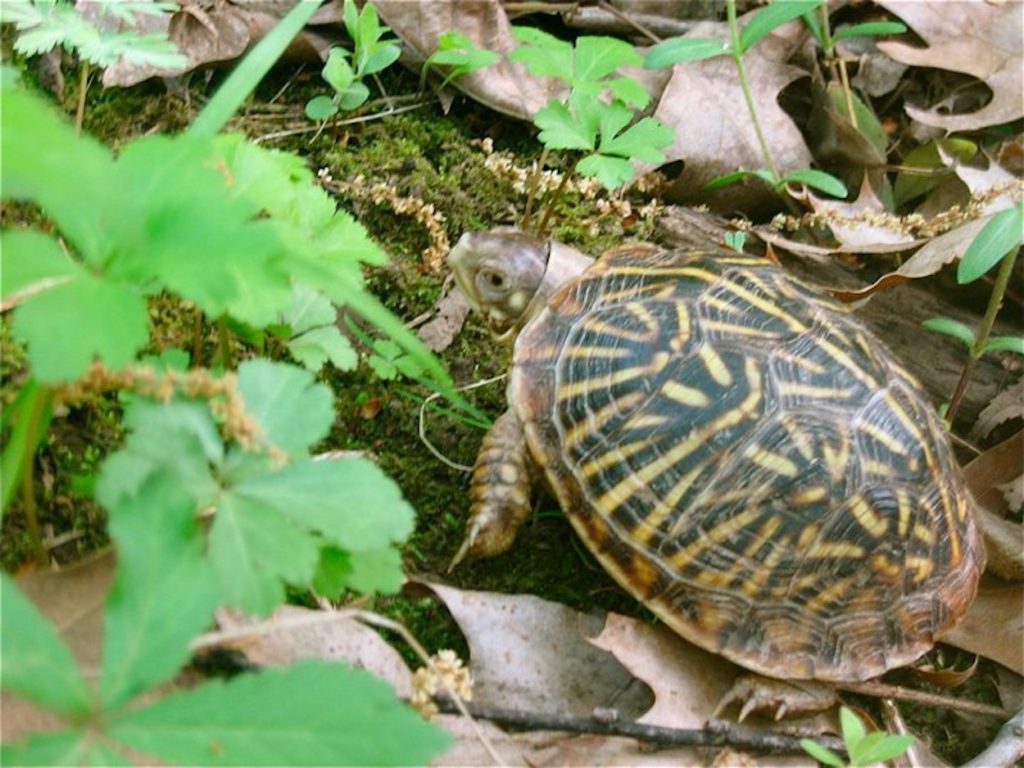About
Bobcat
Bobcats are among the most secretive of Kansas furbearers. They range throughout Kansas, but even where they reach the highest densities in the southeast, we rarely see them. Bobcats are usually only a leap away from cover. They closely associate with shrubby edges of riparian woodlands and field borders, timber, rocky ledges or outcroppings, ravines, and other brushy or generally broken habitat types. Their spotted fur provides excellent camouflage in these habitats, and their willingness to crouch and hide rather than bolt across open spaces aids in their elusiveness. They primarily eat rabbits, mice, rats, squirrel, and other small mammals.
Nocturnal and solitary, a female bobcat’s territory can cover a 6 square mile range, and they can travel three to seven miles nightly, inspecting objects as they go and marking with feces and urine. Males can travel up to 60 square miles. Mating begins in December and can extend into June, peaking in March. Litters of usually two to three kittens are born after 50 to 70 days, most in May and June. Weaning occurs after two months, and young stay with the female until fall.
Baby bobcat – To rescue or not to rescue
Mother bobcats are EXTREMELY protective of their young.
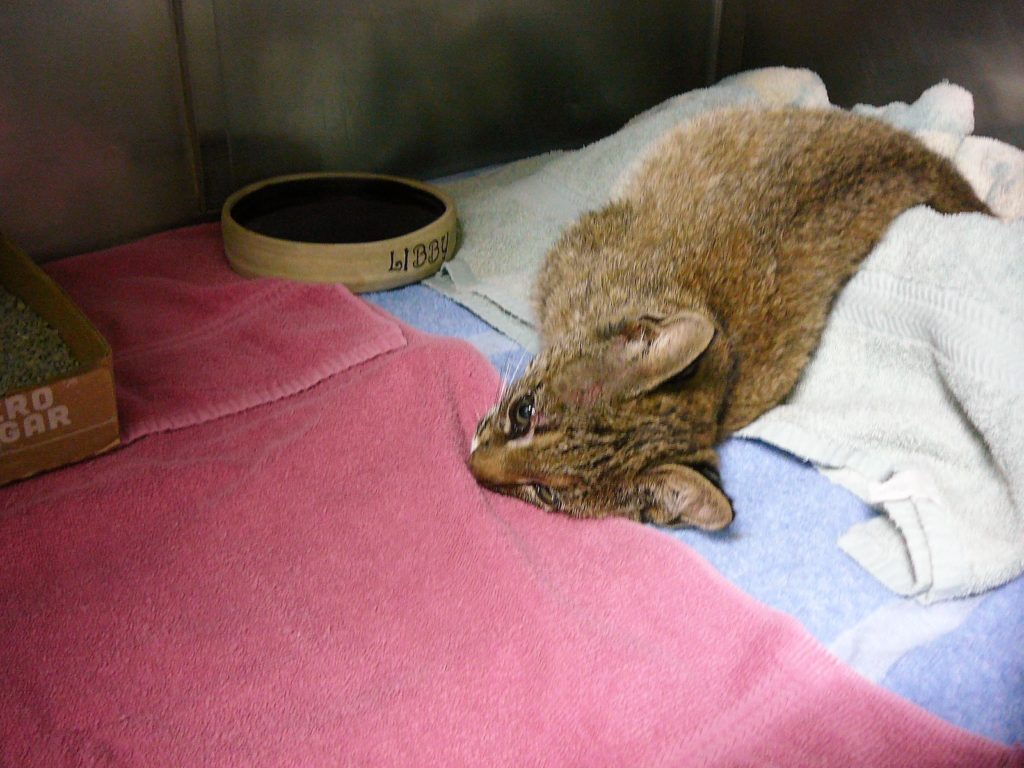
Call us first
If you think you see a baby bobcat, do NOT touch it or pick it up! Only approach or handle the kitten after you’ve spoken to us so we can give you instructions.
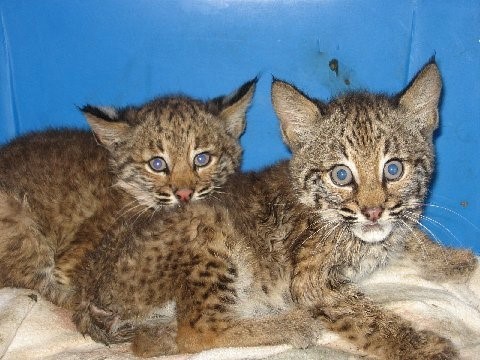
Bobcat kittens
If the kitten is young enough, she might not fight you, or bite, but she will still scratch you, struggle, and more importantly, she will make noise, which is sure to get Mom’s attention.
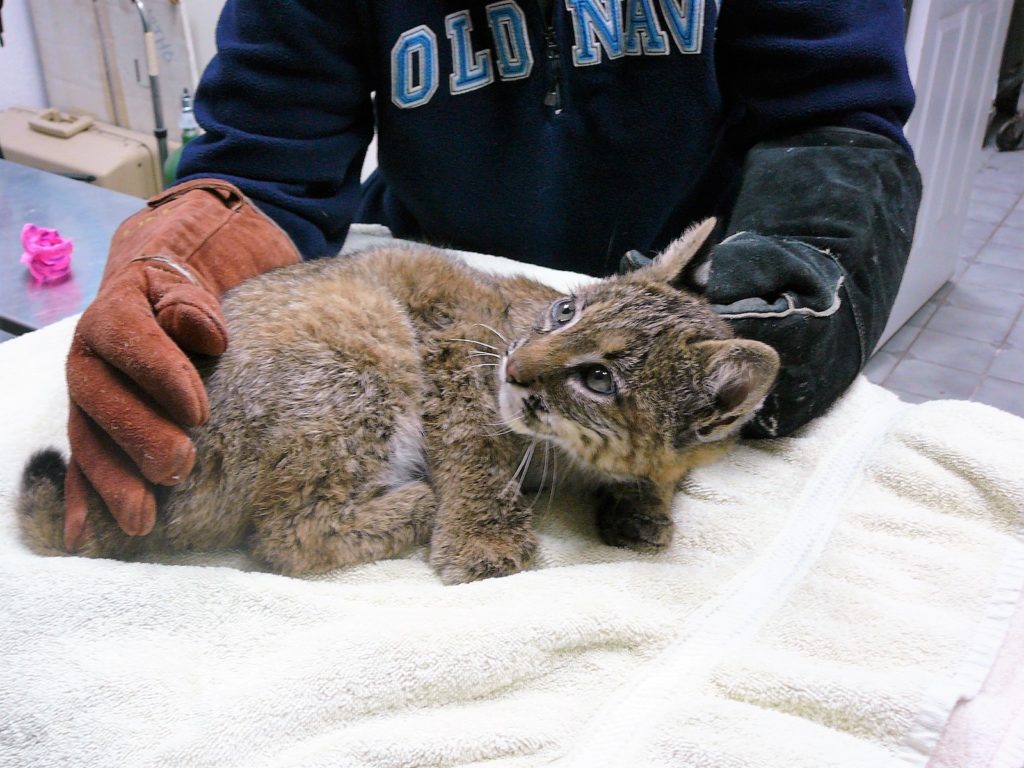
What to do
If you come across a bobcat…
Occasionally, humans will wander toward an area where a bobcat has a fresh kill hidden. In those cases, the cat will act defensively, and show his teeth, snarl at you, and block your path to walk forward. If this happens to you, turn around and walk in the other direction. The cat should not follow you if you are going in the opposite direction of whatever he is guarding. As soon as the cats are finished eating whatever it is, they will move on to a new area. Give them a few days in case it is a large deer-sized animal.
Signs of Injury
If you notice any of these issues, bring the animal to OWL as soon as possible
- Cold and lethargic.
- Covered with fleas, ants, ticks, or flies/flystrike (looks like small clusters of rice anywhere on the animal).
- Dehydrated.
- Has been fed any kind of formula or food.
- Has been in a cat’s or dog’s mouth.
- Broken limb, cuts, or bruises
- Head tilt.
- Bleeding.
- Unable to stand or move without falling over.
Common Concerns
The important thing to remember is to stay back. If a bobcat is nearby, quietly back away and take your pets inside. The bobcat will probably move on quickly. Do not let your cat or dog run unattended in the neighborhood or even your yard. Occasionally, we might wander into an area where a bobcat has hidden a fresh kill. In those cases, the cat will act defensively, show his teeth, snarl, and may block your path. If this happens, walk in the opposite direction. The cat should not follow. When a bobcat is finished eating, it will move on. For large animal, such as deer, the bobcat may linger for a few days.
Sometimes, bobcats will climb into a tree and lay down on a large branch, usually very high up. This behavior is commonly exhibited by kittens, but also has been reported in adult bobcats. This could be a dangerous situation. Move away from the animal, go inside, and bring pets in, too.
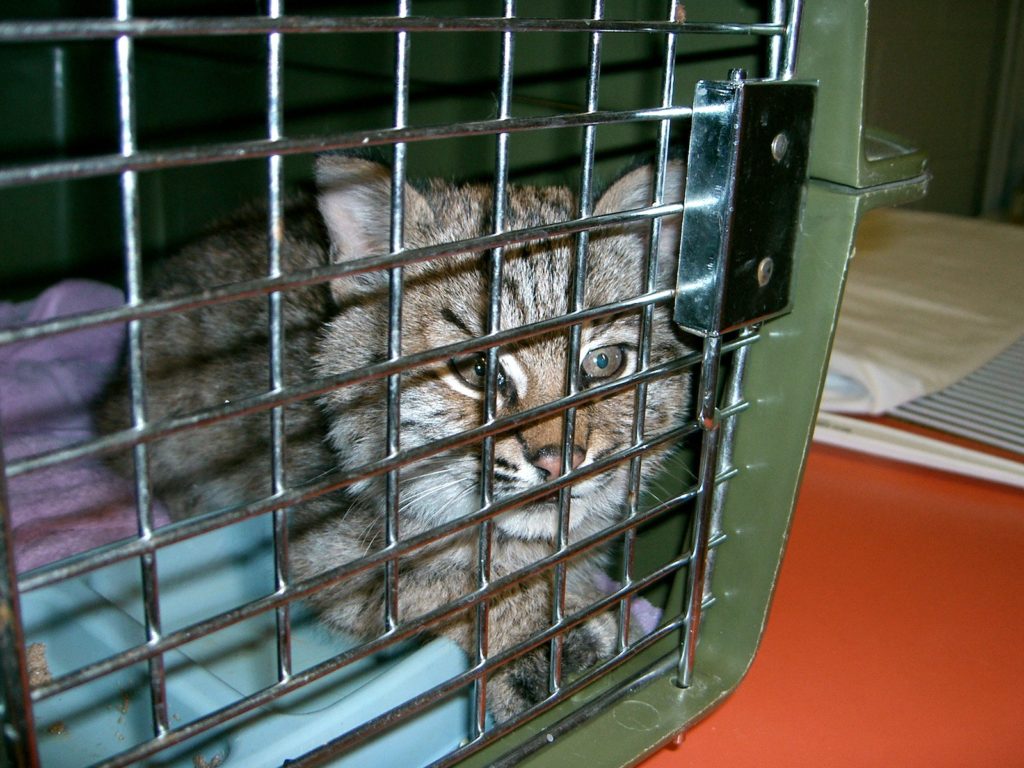
What to do
What to do if you find an injured adult bobcat
Call us. We’ll help you take the right steps to ensure your safety and what’s good for the cat. Do not transport a bobcat on your own. These are dangerous animals and require the help of an experienced animal handler.

Contact Operation WildLife for help.

